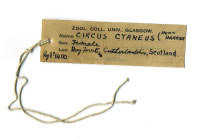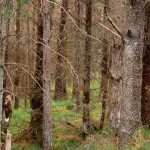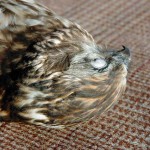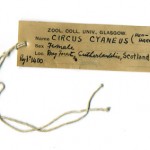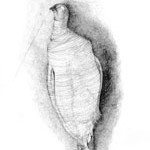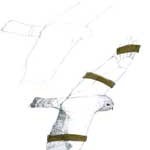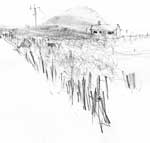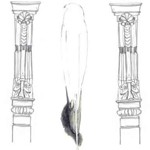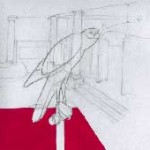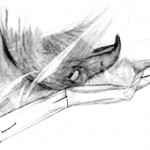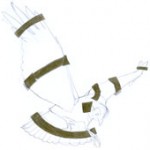Disposition
biogeographical work by Kate Foster, Merle Patchett and Hayden LorimerWorking on the unique history of a hen harrier in 2003, I was led to return with it to Reay Forest, part of the Duke of Westminster’s Scottish Estate. After it had been killed in the far north-west of Scotland in the 1920s, the hen harrier had travelled somehow to Glasgow via Inverness. I met people living in the estate village, and learned about how the land has been shaped for hunting – no wilderness this. We talked about how there is ongoing persecution of hen harriers in some places, other landowners have changed priorities of land management to allow space for birds of prey. Though they wished to see hen harriers, the estate staff said there were still no live birds.
Returning to the museum, I redisplayed the hen harrier in combination with elements of Reay Forest, as Disposition 1 and Disposition 2 shown in the photos below.
I imbued this unhomed specimen with the impossible desire that it should take flight, that I could bring something dead alive. Being haunted, I reworked some contexts of the hen harrier specimen as ‘vexed’ dioramas – different glimpses of a ‘hollow-eyed harrier leading homeward’. These offer views of a skydancer plucked from the sky by Sport, turned inside out and set in rigid repose for Science. A bird whose afterlife persists, displaced and out of time.
The museum label acted as a frame for these ‘dioramas’ – which will open below as you click on them:
Disposition generated joint-work, expanding the ways the history of this unique and haunting specimen may be told.
Click on the images below for texts led by Merle Patchett and a Postscript by Hayden Lorimer.
Disposition is artwork conducted initially in 2003 with support of the Scottish Arts Council, reworked to become part of “The Animal Gaze” exhibition in 2009. Acknowledgements to Hunterian Zoological Section in Glasgow for use of images and specimen, with especial thanks to Maggie Reilly. Thanks also respectively to Dick Hendry; RSPB staff; Ian Morrison and other staff and residents of Westminster Estates for assistance, including donation of a swatch of Westminster Tweed, and Mr. Willy Elliot for help in working out routes the specimen might have taken to the museum. Also the Department of Geographical and Earth Sciences at the University of Glasgow who hosted a Leverhulme Trust Residency, allowing joint work with Hayden Lorimer and Merle Patchett.


